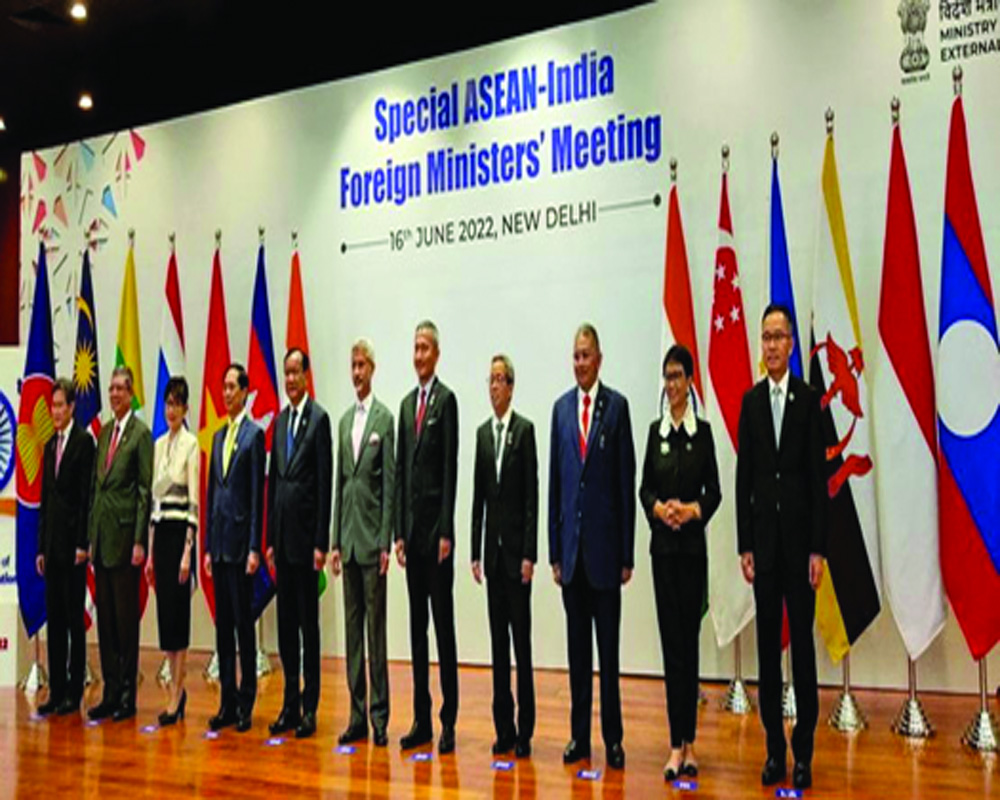Wants several novel aspects of services to be included
New Delhi played host to the Special Asean-India Foreign Minister’s Meeting (SAIFMM) to mark three decades of dialogue and a decade of strategic level engagement with Asean this week. The SAIFMM was preceded by a senior officials’ in-person meeting. The senior officials of Asean, which is a regular platform for engagement, had last interacted virtually in May 2022. During the virtual meeting in May, India had talked about the “convergence between the Asean Outlook for the Indo-Pacific (AOIP), India’s Indo-Pacific Oceans’ Initiative (IPOI) and Indo-Pacific policies announced by several ARF countries.” The focus for all the meetings had been on security, post-pandemic recovery, development of resilient supply chains, cybersecurity and open transparent rules-based maritime zones. The Asean leaders held a special summit with US President Joe Biden in Washington DC in April. The summit was high on political and regional posturing but lacked economic push. The US-Asean relationship is likely to be elevated to the “comprehensive economic partnership” status towards the end of the year. However, this would not guarantee a wholehearted support from all of Asean for a US-led Indo-Pacific order. Most of the nations in the southeast Asian neighbourhood, which constitutes Asean, are striving for greater economic engagement with rich nations. The US has investments worth $330 billion in Asean nations. However, as many analysts have pointed out, the US has taken a back seat in furthering its economic engagements and trade relations with Asean. This has led to an aggressive China-led Regional Comprehensive Economic Partnership (RCEP) dictating most of the economic agenda. Notably India is not part of RCEP, which is the largest free trade agreement in force. The Asean countries have been using the RCEP+ model to negotiate favourable agreements with large trading partners such as EU and Canada.
The Asean members’ agility in negotiating trade and economic relations has also seen many of the member countries joining the recently announced Indo-Pacific Economic Framework in Tokyo. India has had a free trade agreement in place with Asean members since 2010; however, it has always seen a trade imbalance, with imports exceeding exports by huge margins. Commerce Minister Piyush Goyal, speaking at an event for Asean trade and finance ministers, had last year lamented, “It is unfortunate that in the recent past, we had to deal with several restrictive barriers on our exports in the Asean region, particularly in the agriculture and auto sectors.” The rising challenges of non-tariff barriers, import restrictions, export taxes by Asean countries, together with backdoor entry of China (read China-made goods) through Asean countries is a major cause of concern for India. There have been ongoing talks for setting up a review panel on the India-Asean FTA for a more equitable growth for the partners. India has been looking at expanding the Asean FTA to include several novel aspects of such as services, digital economy, electronics, supply chains, fisheries, etc. The goal, as highlighted by the Minister, is to take the economic relationship from nearly $80 billion to $200 billion. It might be a difficult FTA review for India to pull out, given it is entering in parallel negotiations with bodies such as the EU and UK. The EU and UK trade agreements could include negotiations on some of the novel aspects including those related to the digital trade on which India has apprehensions. These upcoming negotiations could have dedicated work groups on cross-border data flows, data privacy related topics, on some of which India has chosen to tread a path different from that of the Western world. India’s position on these new-age trade issues with the developed world could shape its negotiations with existing partners such as Asean.
(The writer is a policy analyst. The views expressed are personal.)


























